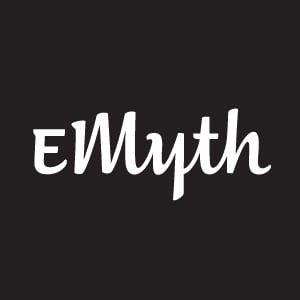"The purpose of business is to create and keep a customer."
-- Peter F. Drucker, management author, teacher and consultant
The lead generation and lead conversion processes focus only on creating new customers, but the client fulfillment process is concerned with keeping them. Optimal client fulfillment has two basics tenets: you must deliver on your promises, and you must provide something of real value to customers. Fundamentals aside, client fulfillment is about working to keep customers - and keep them coming back - because retaining customers is much less expensive, and much more profitable, than trying to find new ones. At its heart, the client fulfillment process of every business has the main components of: product strategy and design, production, delivery, and customer service.
Product strategy and design
Product strategy and design have to do with making sure that your products do what you intend for them to do in order to satisfy your customers, with your customers' needs and wants uppermost in your minds.
Let's take a quick look at the example of the Apple iPod - one of the most successful consumer products of recent times. Its success can be attributed to many factors, but the fundamental strategy employed by Apple presents an excellent example of addressing their client fulfillment process before their lead generation and lead conversion processes. The iPod team kept the customer in the forefront of their minds, and designed a portable music player with great features such as a convenient compact size and an easy-to-navigate interface, along with something more—an electronic device with great sensory appeal. And, by doing so, they met a consumer need that millions of devoted customers didn't even know they had!
Production and delivery
Production has to do with taking the idea of the product or service that you design and making it a reality for your clients, and delivery is about getting that product or service into their hands in a way that makes them feel good about the value you offer. In the case of the iPod, while the product represented a new category for Apple, they were able to tap existing design and production resources to create it. At the strategic level Apple was leveraging existing strengths to enter a new market.
What differentiates the iPod from every other MP3 player on the market is the existence of the Apple iTunes music store. The iTunes music store allows customers to legally and instantly buy and deliver content from the Web to their home computers and their iPods. The iTunes store was Apples primary differentiator in the industry, and as the adoption rate of the iPod extended into the mainstream, the music store represented a massive attraction tool for customers and huge barrier for competitors. From a strategic perspective, Apple reinvented the distribution and delivery channel for audio content, essentially taking over the role of the middle man and extending its service beyond the realm of hardware. This innovation leveraged Apple's core strengths by tapping their software production skills and delivering something in a new and innovative way.
Customer service
The definition of exceptional customer service is to enhance your main offer in a way that is focused and deliberate and that enhances your offering in the eyes of your customers; in other words, it is the service you offer customers on top of the main offer.
In the case of the iPod, it has been wildly successful because Apple focused first on creating an amazing product that gives their customers what they want, and more. The Apple iPod example proves that if you have and use an innovative and strategic approach to the hugely important, but often overlooked, functional areas of client fulfillment (product design, production, delivery, and customer service) you can create and keep customers, and keep them coming back, time and again.
Where can YOU start to optimize your client fulfillment system?
What does all this mean for you? Now that you have this overview of the components of client fulfillment, what will YOU do to start transforming them in your business?
To begin with, you can look at your existing product, examine it with a view to what your customer really wants, and perhaps redesign it to more closely meet that ideal product. Then, think about your production, delivery and customer service processes, and whether they can be optimized and improved.
Really think deeply about how you approach client fulfillment in your business. Start by asking yourself:
- What is your product or service, and what is the idea behind it?
- How do you make it a reality; how do you produce it?
- How do you get it into the hands of your customers?
- What customer services do you offer to enhance the value of your product that are not an inherent part of the product itself?
Remember, everything your business does should directly or indirectly serve your customers. Client fulfillment is, simply put, the very heart of your business, and therefore deserves your best thinking, your best attention and your best effort ? because don't your customers deserve the best?



Comments